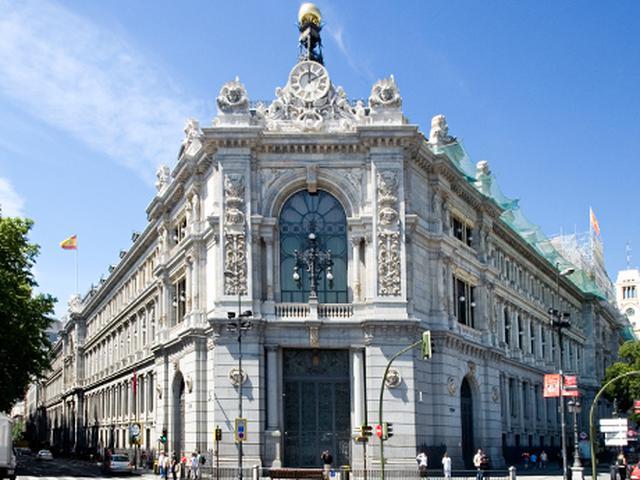Bank of Spain

The Bank of Spain, a prominent institution in the heart of Madrid, has a rich history dating back to its establishment in 1856. Originally formed through the merger of the Bank of Isabel II and the Bank of San Fernando, the institution quickly outgrew its initial headquarters at the Cinco Mayores Gremios building on Calle de Atocha. This growth led to the decision to construct a new headquarters, resulting in the acquisition of the Alcañices Palace from the Duke of Sesto. The purchase, which cost approximately three million pesetas, paved the way for the construction of the iconic building that stands today.
Designed by architects Eduardo Adaro and Severiano Sainz de la Lastra, the new Bank of Spain building was a masterpiece that earned them the prestigious gold medal at the National Exhibition of Fine Arts in 1884. The construction of the building commenced on July 4 of the same year, with a ceremonial laying of the first stone attended by His Majesty Alfonso XII. The grand inauguration took place on March 3, 1891, with King Alfonso XIII and Queen Regent María Cristina presiding over the event.
The architectural layout of the Bank of Spain is a marvel to behold, with its floor plan organized around a series of patios aligned with the axes of the Prado and Alcalá houses. The facades of the building boast an eclectic decorative style, blending elements of various architectural influences. The solid foundation and ground floors exude a sense of grandeur and stability befitting the institution housed within. The carefully crafted gradation of window sizes on different floors adds a dynamic element to the overall horizontal design of the building.
Visitors to the Bank of Spain can marvel at the intricate details of the architecture, from the ornate facades to the meticulously designed interiors. The building stands as a testament to the rich history and cultural heritage of Madrid, offering a glimpse into the city's past and present. Whether exploring the grand halls or admiring the exterior from the surrounding streets, a visit to the Bank of Spain is sure to leave a lasting impression on tourists and locals alike.
© ChatGPT 3.5
The block complex was completed from 2003 to 2006, according to the project, winner of the competition called by the Bank in 1978, by Rafael Moneo, on the corner of Alcalá and Marqués de Cubas streets where the former headquarters of the Bank was located. García-Calamarte. The final project will not be executed until so many years after the competition due to licensing problems and other legal issues for the demolition of the Calamarte Bank building.
In 1999 it was declared a Site of Cultural Interest in Spain.